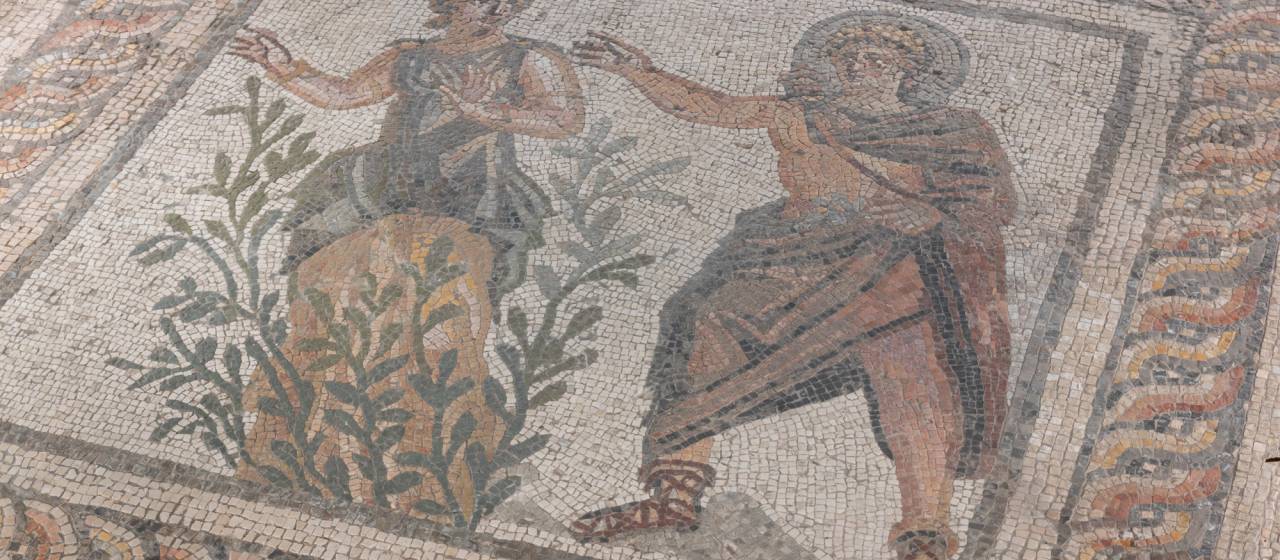
From left: Alexandra Letvin, Duane Wilder, Class of 1951, Associate Curator of European Art; Silvia Callegari, conservator at EverGreene Architectural Arts; and Elena Torok, associate objects conservator, discuss the installation of the Museum’s stone works from Palma de Mallorca, Spain: Balustrades and columns probably from the Can Ayamans (Ayamans House), 1549; Stairway probably from the Carrer de l’Aigua (Water Street), 15th or 16th century. Princeton University Art Museum. Gift of Baroness Cassel van Doorn.





